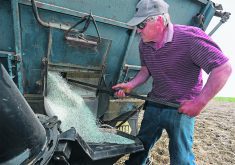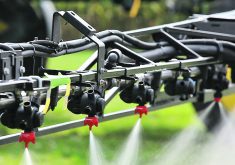Biological crop inputs are becoming a multibillion-dollar industry.
As the financial stakes rise, so does the size of the companies that attempt to grab a piece of the market.
However, the sheer size of the players and their geographical footprint has an impact on the effectiveness of these products, and farmers would do well to consider that.
Read Also

Kochia has become a significant problem for Prairie farmers
As you travel through southern Saskatchewan and Alberta, particularly in areas challenged by dry growing conditions, the magnitude of the kochia problem is easy to see.
There is no doubt the biological business is growing.
A recent study from the United States found that in 2017, for the first time, more patents were filed for biological pesticides (173) than for conventional crop protection products (117).
While conventional chemical products still account for about 93 per cent of the agrochemical research and development budget, biological crop protection products now comprise seven per cent.
As well, the report showed, the business requires ever-deeper pockets. The cost of bringing a new active ingredient to market is more than US$300 million, and it takes more than 12 years to introduce new active ingredients.
Costs associated with post-launch monitoring have increased by 330 per cent in the last five years.
With these numbers in mind, it is no surprise that crop input companies are spending billions to either buy out companies that have biological products for crops or to develop their own biological portfolio.
These big companies are spread around the country, the continent and the world, and that’s where the problem lies.
Biological products are living organisms applied to a crop or put in the ground to achieve a particular objective. However, those meant to reside in soil often find it a harsh environment. Other micro-organisms are already present, often localized to specific fields, and they don’t always play nice with the new kids.
Maggie Wagner, a plant scientist and soil microbiology expert from the University of Kansas, acknowledged the problem when she talked to the Western Producer this spring about the challenges that come with using biologicals.
“The products that focus on addition of microbes into the (soil) system tend to have inconsistent results,” she said.
The basic obstacle is the “resident” population of micro-organisms that will outcompete the new microbe for food and resources.
“Basically, it’s not adapted to the … soil you’re putting it in,” Wagner said.
This has some soil scientists wondering if the answer is customized inoculants, in which the community of microbes will vary from field to field, depending on soil type and geography.
Can that science co-exist with the current trend of bigger and more geographically spread-out multinationals that are getting into the biological business? Are these large companies capable of the kind of localized focus that the sector might require?
Canadian agriculture needs local companies, or at least local research, to make sure farmers have access to the latest technologies, including biological cropping products.
It’s not a new problem with ag inputs, especially those developed by international companies, but the living nature of biologicals significantly increases the complexity.
On-farm testing is one solution, although not everyone is set up for that. Producers will need to ask where products were developed and for whom.
Local research will help, and producers should look for those results before relying on a new product.
The Ag in Motion farm show near Saskatoon is less than a week away, and with it will come a host of new ideas.
As farmers consider the new technology and kick the proverbial tires, these will be important questions to raise.
















